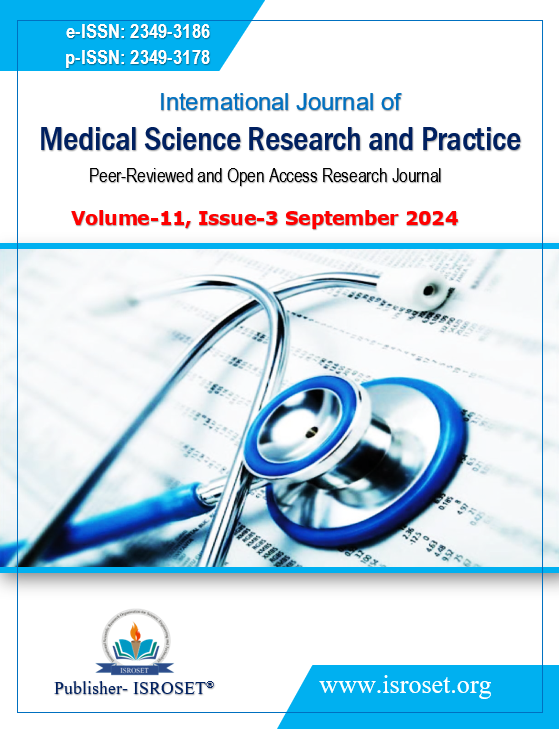Utilizing Quality Indicators to Detect and Reduce Pre-Analytical Errors in Laboratory Testing
Keywords:
Pre-analytical errors, Quality indicators, Laboratory testing, Hemolysis, Diagnostic accuracy, Patient safetyAbstract
Pre-analytical errors are the most frequent type of errors encountered in clinical laboratory testing, accounting for approximately 46-68% of all laboratory-related mistakes. These errors occur during the stages of patient preparation, sample collection, handling, transport, and processing, often resulting in compromised test accuracy and negatively impacting patient outcomes. The clinical implications of pre-analytical errors can be serious, leading to misdiagnosis, inappropriate treatments, delays in patient care, and increased healthcare costs. The introduction of quality indicators (QIs) offers laboratories a systematic approach to identifying, monitoring, and reducing pre-analytical errors. QIs measure critical aspects of the pre-analytical phase, such as specimen rejection rates, hemolysis index, patient identification accuracy, sample transport conditions, and phlebotomy success rates. By tracking these indicators, laboratories can detect weaknesses in their processes, implement targeted interventions, and ensure consistent improvements in quality. Studies have demonstrated that the implementation of QIs significantly reduces error rates, leading to enhanced diagnostic accuracy and improved patient safety. This review discusses the common pre-analytical errors, the role of QIs in mitigating these errors, and the impact of quality management on overall laboratory performance, with evidence drawn from recent research and clinical practice.
References
Lippi, G., Chance, J. J., Church, S., Dazzi, P., Fontana, R., Giavarina, D..et al., “Preanalytical quality improvement: from dream to reality,” Clinical Chemistry and Laboratory Medicine, Vol.49, Issue.7, pp.1113-1126, 2011. http://dx.doi.org/10.1515/CCLM.2011.600
Plebani, M., “The detection and prevention of errors in laboratory medicine,” Annals of Clinical Biochemistry, Vol.47, Issue.2, pp.101-110, 2010. http://dx.doi.org/10.1258/acb.2010.009240
Hawkins, R., “Managing the pre- and post-analytical phases of the total testing process,” Annals of Laboratory Medicine, Vol.32, Issue.1, pp.5-16, 2012. http://dx.doi.org/10.3343/alm.2012.32.1.5
Sciacovelli, L., Aita, A. i Chiozza, M.L. ., “External quality assessment and quality indicators for harmonizing the pre-analytical phase,” Clinical Chemistry and Laboratory Medicine, Vol.58, Issue.6, pp.920-929, 2020. http://dx.doi.org/10.1515/cclm-2019-1080
Mehndiratta M, Pasha EH, Chandra N, Almeida EA. Quality Indicators for Evaluating Errors in the Preanalytical Phase. J Lab Physicians.; Vol.13, Issue.2, pp.169-174, 2021. doi:10.1055/s-0041-1729473.
Carraro, P., Plebani, M., “Errors in a stat laboratory: Types and frequencies 10 years later,” Clinical Chemistry, Vol.53, Issue.7, pp.1338-1342, 2007. http://dx.doi.org/10.1373/clinchem.2006.081760
Lippi G, Blanckaert N, Bonini P, Green S, Kitchen S, Palicka V, Vassault AJ, Plebani M., “Hemolysis: An overview of the leading cause of unsuitable specimens in clinical laboratories,” Clinical Chemistry and Laboratory Medicine, Vol.46, Issue.6, pp.764-772, 2008. http://dx.doi.org/10.1515/CCLM.2008.170
Lippi, G., Plebani, M., “Laboratory applications for hemolysis detection: Advancements and future directions,” Clinical Biochemistry, Vol.45, Issue.4, pp.273-277, 2012. http://dx.doi.org/10.1016/j.clinbiochem.2012.01.003
Aarsand AK, Røraas T, Bartlett WA, Co?kun A, Carobene A, Fernandez-Calle P, Jonker N, Díaz-Garzón J, Braga F, Sandberg S; European Federation of Clinical Chemistry and Laboratory Medicine (EFLM) Working Group on Biological Variation. Harmonization initiatives in the generation, reporting and application of biological variation data. Clinical Chemistry and Laboratory Medicine (CCLM), Sept., Vol.56, Issue.10, pp.1629-1636, 2018. http://dx.doi.org/10.1515/cclm-2018-0058
Ambachew, S., Adane, K., Worede, A., Melak, T., Asmelash, D., Damtie, S., Baynes, H. W., Abebe, M., & Biadgo, B. (). Errors in the Total Testing Process in the Clinical Chemistry Laboratory at the University of Gondar Hospital, Northwest Ethiopia. Ethiopian journal of health sciences, Vol.28, Issue.2, pp.235–244, 2018. https://doi.org/10.4314/ejhs.v28i2.15
van Dongen-Lases, Edmée C., Cornes, Michael P., Grankvist, Kjell, Ibarz, Mercedes, Kristensen, Gunn B.B., Lippi, Giuseppe, Nybo, Mads, Simundic, Ana-Maria and on behalf of the Working Group for Preanalytical Phase (WG-PRE), European Federation of Clinical Chemistry and Laboratory Medicine (EFLM), "Patient identification and tube labelling – a call for harmonisation" Clinical Chemistry and Laboratory Medicine (CCLM), Vol.54, Issue.7, pp.1141-1145, 2016. https://doi.org/10.1515/cclm-2015-1089
Bowen RA, Hortin GL, Csako G, Otañez OH, Remaley AT. Impact of blood collection devices on clinical chemistry assays. Clin Biochem.; Vol.43, Issue.1-2, pp.4-25, 2010. doi:10.1016/j.clinbiochem.2009.10.001.
Alcantara, J. C., Alharbi, B., Almotairi, Y., Alam, M. J., Muddathir, A. R. M., & Alshaghdali, K. (). Analysis of preanalytical errors in a clinical chemistry laboratory: A 2-year study. Medicine, Vol.101, Issue.27, e29853. 2022. https://doi.org/10.1097/MD.0000000000029853.
Zaninotto M, Graziani MS, Plebani M. The harmonization issue in laboratory medicine: the commitment of CCLM. Clin Chem Lab Med. Vol.16; Issue.61, pp.721-731, 2022. doi: 10.1515/cclm-2022-1111.
Downloads
Published
How to Cite
Issue
Section
License

This work is licensed under a Creative Commons Attribution 4.0 International License.
Authors contributing to this journal agree to publish their articles under the Creative Commons Attribution 4.0 International License, allowing third parties to share their work (copy, distribute, transmit) and to adapt it, under the condition that the authors are given credit and that in the event of reuse or distribution, the terms of this license are made clear.






